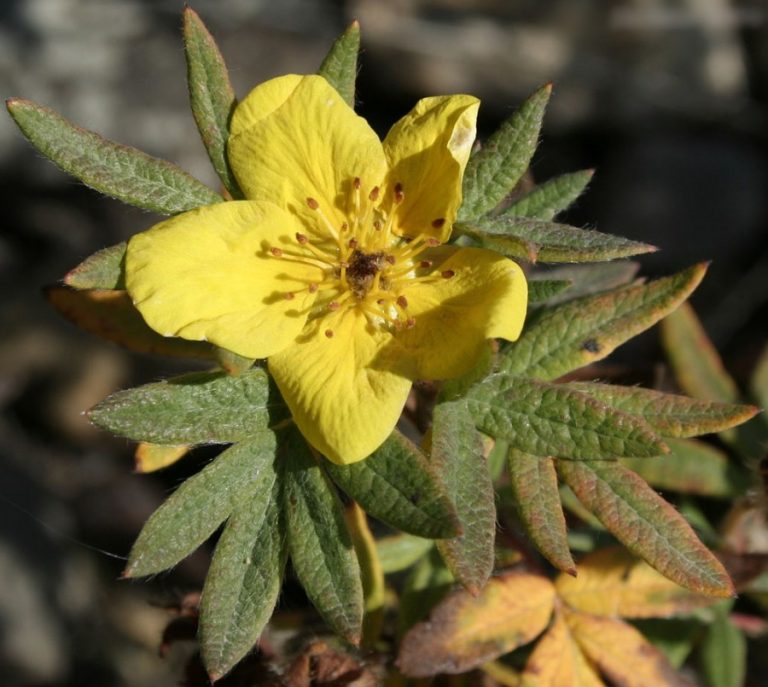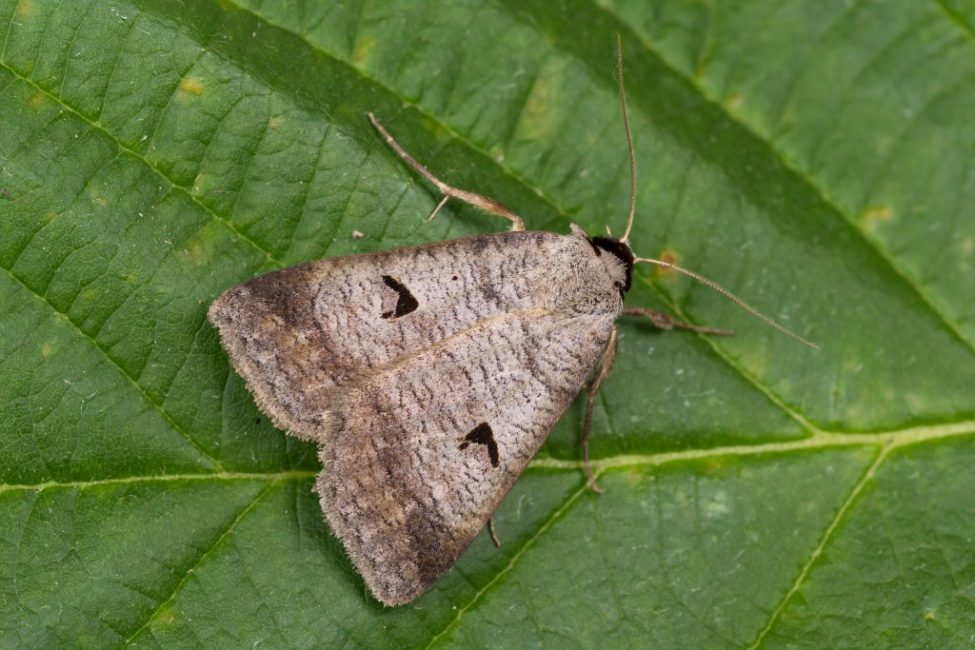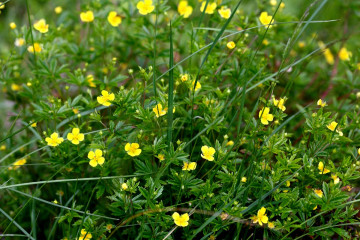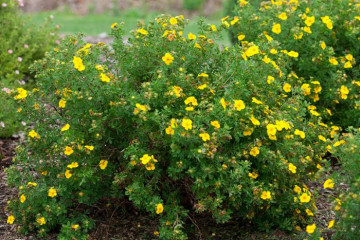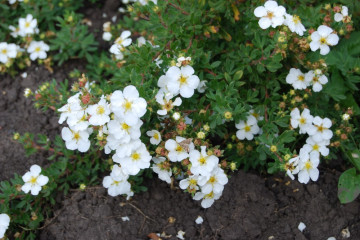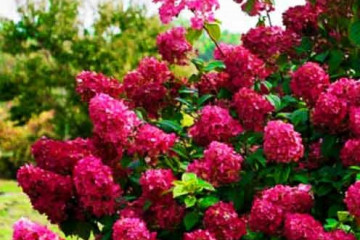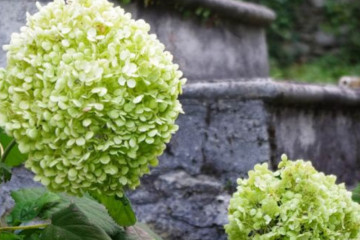Why Potentilla does not bloom - how to feed
Content:
Cinquefoil is a miniature compact shrub of the Rosaceae family. It can be an original decoration of a small personal plot or city square. In the summer, the leaves of the plant are colored in different shades of green, and in the fall they acquire a beautiful golden color.
Breeders have bred many ornamental varieties, among which there are bush and herbaceous species. Most of them are characterized by abundant flowering from early summer to late autumn. The color range of Potentilla can be varied, for example, yellow, pink, white, red or orange.
Sometimes it happens that the long-awaited flowers do not appear on the bush. To understand why the plant does not bloom and how to fix it, you need to understand the peculiarities of planting Potentilla and caring for it.
Incorrect fit
One of the main reasons why Potentilla does not bloom well is the shaded planting site. The plant likes open, sunny places with rich, moist soil.
It is necessary to start planting seedlings in early spring, as soon as the snow melts and the soil warms up a little. If several bushes are planted nearby, then the distance between them should be at least 30 cm. The bushes must be watered abundantly and monitored for 20 days so that the soil does not dry out.
Cinquefoil has a superficial root system, so it does not need to be placed in a deep hole, the sufficient depth is half a meter. A prerequisite is a drainage layer at the bottom of the pit. It is made from expanded clay, fine gravel or broken brick.
Watering errors
Another reason why cinquefoil does not bloom may be improper watering. The plant is considered unpretentious and drought-resistant, so it will not need additional watering in a rainy summer. In a hot, dry summer, the shrub is recommended to be watered 2-3 times a week.
There is one more mistake - you cannot take cold, ice water for irrigation, so as not to damage the root system of the plant. For this, it is better to use a warm, settled liquid. After watering, the soil must be loosened.
In the dry season, to obtain abundant flowering, the plant is recommended to be sprayed from a spray bottle in the evening. Young seedlings need to be watered more often and with a large volume of water.
Lack of light
Often the solution to the problem of the lack of flowering of Potentilla lies in the lack of light. These plants prefer well-lit areas where the sun shines in the morning and a little shade prevails in the afternoon.
However, a large amount of direct sunlight adversely affects the life of the plant. In this case, the flowers fade, the petals wither and fall off. An ideal place for Potentilla shrub will be an area with diffused light.
Fertilization and feeding
The flowering shrub responds well to fertilization in the soil. When planting young seedlings, you need to know how to feed the cinquefoil.For this, any mineral fertilizer or ash is suitable, and next year the following fertilizers can be used for the plant:
- In the spring, during the period of active growth, potassium sulfate and superphosphate are introduced into the soil.
- During the formation of buds, the soil is fertilized with phosphorus-potassium complexes.
It is necessary to feed the shrub with mineral fertilizers for flowering plants three times per season - in spring, summer and autumn. In the spring, feeding helps the plant to wake up after hibernation, and in the fall, on the contrary, to prepare for it.
Many gardeners are interested in the question of how to fertilize Potentilla in the summer and in what period it is better to do it. It is best to apply fertilizers in early summer, when the plant begins to bud. The most popular options for feeding Potentilla in June are folk remedies. For example, ash solutions or mullein infusions.
Diseases
A common reason why a plant does not bloom well is the presence of fungal diseases. It can be mottling, rust or powdery mildew. To suppress the disease, fungicides are used in the form of Bordeaux liquid, colloidal sulfur, or industrial preparations. For the treatment of rust, additional treatments with solutions of potassium permanganate, boron and sulfur will be needed. To make the treatment of plants more effective, it is better to carry it out before the formation of buds.
Pests
Spectacular Potentilla bushes are used by flower growers in landscape compositions not only because of their beauty, but also because the plant is resistant to pests. The only enemy of the plant is the scoop. This parasite looks like a moth, resembling it in color and wing shape. The greatest harm to the plant is caused by the caterpillars of the scoop, they eat the leaves and feed on the plant juices.
The presence of a pest is evidenced by holes in the foliage and larvae deposited on its underside. As a result of this neighborhood, the plant stops blooming. In the bush, on which the scoops have settled, the leaves turn yellow quickly.
Regular spraying with insecticides helps to fight scoops. The most popular among them:
- Fufonon;
- Fitoverm;
- Decis.
You can also use special traps for insects or biological products (Lepidocid, Bitoxibacillin, wood ash solution or soap). Such products do not harm the plant and do not accumulate in the soil.
After treating the shrub from parasites, it is recommended to transplant the plant to another place, and dig up the soil and disinfect it, because insects hibernate and lay their eggs in the upper layers of the soil.
How to feed and restore a plant
To make the plant bloom, it is necessary to apply fertilizers based on magnesium, potassium and phosphorus on time, avoiding nitrogen fertilizers. Spring pruning of dry and old branches, timely moderate watering and complex feeding will help to restore the bush after winter.
Gardeners love Potentilla for its decorative properties and abundant flowering. If in the next season the plant has not bloomed, you need to analyze all stages of caring for it and examine the flower for diseases or pests. To prevent the problem from appearing, it is necessary to water and spray the cinquefoil during the dry period, loosen and mulch the soil, and apply mineral fertilizers. Sanitary pruning will also help.


